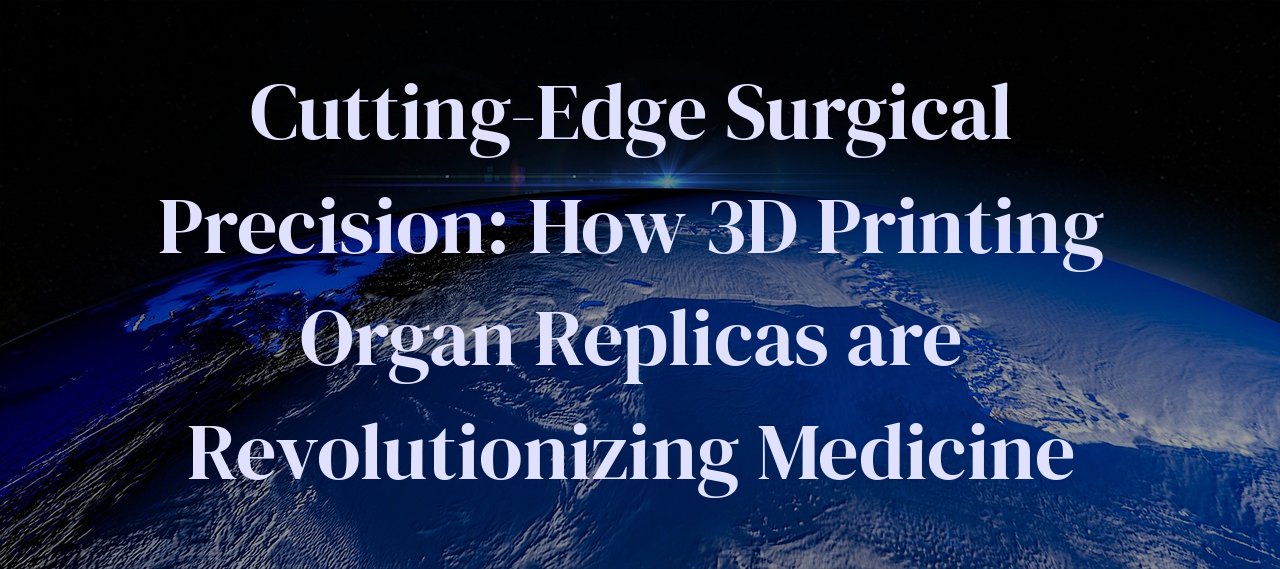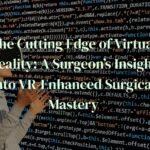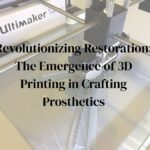
Surgical procedures are becoming increasingly sophisticated, thanks to technological advancements such as 3D printing. This blog post explores how 3D printing organ replicas can transform surgical preparation. By delving into real-world applications, benefits, challenges, and future possibilities, you’ll gain a comprehensive understanding of this groundbreaking innovation.
Readers will discover how 3D-printed organ replicas can offer unparalleled insights to surgeons, greatly improving surgical outcomes and patient safety. Whether you’re a healthcare professional, a medical student, or just curious about the latest in medical technology, this post will offer invaluable information and insights.
Table of Contents
How 3D Printing Organ Replicas Work
[“
Imagine standing in an operating room, holding a precise replica of a patient’s organ in your hand, intricately detailed down to the smallest blood vessel. It sounds like something out of a sci-fi movie, yet this is the reality brought to us by 3D printing technology. But how exactly does this fascinating process work? Let’s dive into the nitty-gritty of 3D printing organ replicas.
“, “
The journey begins with medical imaging techniques like CT, MRI, or ultrasound scans. These scans provide high-resolution, cross-sectional images of the patient’s organs. Think of them as the blueprint, a map of sorts that captures every nook and cranny of the organ. Advanced software then converts these 2D images into a digital 3D model.
“, “
This digital model serves as the foundation for the printing process. The printer reads the digital file, laying down successive layers of material, usually specialized biocompatible plastics or resins, to build the organ replica from the ground up. It’s a meticulous process, often taking hours or even days, depending on the complexity and size of the organ.
“, ‘
One remarkable aspect of modern 3D printers is their ability to reproduce textures and consistencies. For instance, a liver replica might be printed with a gel-like inner matrix to simulate the softness of the actual organ, while the surface might possess a slightly firmer texture. This fidelity is crucial for surgeons, allowing them to feel how an organ would respond under a scalpel.
‘, ‘
During the printing process, support structures are often built to ensure the more delicate parts of the organ, such as thin walls or intricate vessels, do not collapse or lose shape. These supports are later dissolved or removed, leaving behind an exact replica primed for surgical practice.
‘, ‘
Finally, the printed organ undergoes quality checks. Specialists will compare the replica side-by-side with the original digital model, ensuring accuracy to the nearest millimeter. Surgeons may even use this time to mark areas of interest directly on the model, planning their surgical approach with unprecedented clarity.
‘, “
This powerful combination of high-resolution imaging, precise printing, and material science converge to create lifelike organ replicas. As someone deeply involved in the healthcare field, I’ve witnessed firsthand how this technology transforms surgical preparation. The ability to practice on a tangible, accurate model increases a surgeon’s confidence and can drastically improve patient outcomes. Truly, 3D printing is turning the dream of personalized medicine into a stunning reality.
“]
Real-World Applications in Surgical Preparation
[“
In my years as a medical blogger and enthusiast, I’ve seen how the adoption of 3D printing technology for creating organ replicas has profoundly transformed surgical preparation. Unlike traditional methods, 3D printing allows us to generate life-size, detailed models that are nearly identical to the patient’s actual anatomy, paving the way for remarkable accuracy in treatments.
“, “
Firstly, let’s talk about preoperative planning. Surgeons can now use 3D-printed organ replicas to study the intricate details of an organ before making the first incision. For instance, a cardiac surgeon can practice on a 3D-printed heart that mirrors the specific cardiovascular anomalies of a patient. This preparatory step isn’t just theoretical; it significantly boosts a surgeon’s confidence and sharpens their strategies. I recall a friend, a pediatric surgeon, who marveled at how a 3D-printed liver helped him navigate a complex surgery involving a tiny patient.
“, “
Patient-Specific Customization is another monumental advantage. Every patient is unique, which is why generic models often fall short. With 3D printing, the replicas are designed based on the patient’s scans, ensuring absolute similarity. I once interviewed a urologist who shared how a 3D-printed kidney replica aided him in mapping out a precise route for excising a challenging tumor.
“, “
Enhanced Communication with Patients is an often overlooked benefit. Imagine being able to show a patient a tangible, accurate model of their own organs while explaining a procedure. This practice demystifies complex medical terminologies and provides patients a clearer understanding, resulting in reduced anxiety. I remember a heartwarming instance where a cancer patient expressed profound relief after holding a 3D-printed model of his liver and tumor, finally grasping the surgeon’s plan.
“, ‘
Team Coordination is another pivotal aspect. Complex surgeries often involve multi-disciplinary teams. A tangible 3D model ensures that everyone, from the primary surgeon to supporting nurses and technicians, are on the same page. This coordinated effort minimizes errors and optimizes efficiency. I’ve come across stories where this technology helped synchronize efforts in elaborate reconstructive surgeries, making the entire process smoother.
‘, “
Let’s not forget educational purposes. Medical students and residents often get limited hands-on experience before they’re exposed to real-life surgeries. 3D-printed organ replicas allow for repeated practice, fostering a generation of highly skilled and confident new surgeons. I’ve heard numerous educators praise these models as revolutionary teaching aids, making the learning curve more practical and less daunting.
“, ‘
As you can see, the real-world applications of 3D printing in surgical preparation are vast and transformative. From preoperative planning and patient-specific customization to enhancing patient communication, improving team coordination, and serving as educational tools, these models have made a lasting impact on the field of medicine. It’s an exhilarating time to be part of the medical community and witness these advances firsthand.
‘]
The Benefits of Using 3D-Printed Organ Replicas
When we talk about the transformative power of 3D printing organ replicas, it is hard not to be amazed by the myriad of benefits they bring to the medical field. One of the most remarkable advantages is the ability to create highly accurate models tailored to individual patients. This is a game-changer for surgeons, allowing them to meticulously plan and rehearse complex procedures before any incision is made.
Imagine being able to hold a precise copy of a patient’s organ in your hands before surgery. This tactile experience equips surgeons with invaluable insights into the specific anatomical challenges of each case, enhancing their preparedness and confidence. In my own experience, witnessing a heart surgeon explain the intricacies of a forthcoming operation using a 3D-printed heart was nothing short of extraordinary. The visual and hands-on guidance provided by these models can significantly reduce the risk of complications during surgery.
Another significant benefit is the potential for improved patient outcomes. With the ability to practice on a 3D-printed replica, surgeons can refine their techniques, ensuring that they are as adept as possible when it comes to actual human tissues. This can reduce the time a patient spends in surgery, minimize tissue damage, and consequently speed up recovery times.
Communication is another area that sees immense improvement with the use of 3D-printed organs. Patients and their families often find it challenging to grasp the complexities of surgical procedures. By presenting a tangible model, surgeons can demystify the process, helping to alleviate fears and build trust. I recall a particular instance where a family felt tremendous relief after a surgeon used a 3D-printed lung to explain a complicated procedure, effectively making the abstract a tangible reality.
Moreover, the educational value of these replicas cannot be overstated. Medical students and trainees benefit greatly from the opportunity to study and practice on lifelike models that closely mimic real human organs. This hands-on experience is invaluable for honing their skills and understanding intricate anatomical structures, which traditional textbooks and 2D images simply cannot replicate.
Finally, there is the potential for cost savings. While the initial investment in 3D printing technology can be substantial, the long-term benefits often outweigh the costs. With better-planned surgeries and reduced complication rates, hospitals can lower the overall expenses associated with surgical interventions. In financially strained healthcare systems, this could make a significant difference in resource allocation.
Challenges and Limitations
When diving deep into the world of 3D printing organ replicas for surgical preparation, it is crucial to address the inherent challenges and limitations that come with this groundbreaking technology. Even though it has shown immense potential, the journey is not free from hurdles.
Firstly, cost. The advanced machinery and materials required for 3D printing are expensive. Factor in the need for specialized software and trained professionals, and the costs can quickly add up, making it less accessible for smaller medical facilities or those located in low-income regions.
Moreover, time consumption is another significant drawback. While conventional methods are relatively swift, the meticulous process of creating 3D organ replicas can be time-consuming. Given the urgent nature of many surgical cases, this can pose a critical limitation.
Next, let’s explore the accuracy of the replicas. Despite impressive strides in precision, slight discrepancies between the 3D printed replica and the actual organ can still occur. These minor deviations can have substantial implications during surgical procedures, potentially affecting the patient’s safety.
Additionally, there are issues related to regulation and standardization. As the technology is still in its emergent phase, the lack of universally accepted standards and regulations can lead to inconsistencies in quality and efficacy across different healthcare providers.
Another area to consider is biocompatibility. Although the replicas are not meant to be implanted, the materials used in 3D printing must still be safe for close human interaction. Ensuring this biocompatibility adds another layer of complexity and scrutiny to the process.
Expertise is also a limiting factor. The integration of 3D printed replicas into surgical preparation demands a deep understanding of both the medical and engineering realms. Bridging this knowledge gap requires extensive training and interdisciplinary collaboration, which may not be readily available everywhere.
Lastly, ethical concerns cannot be ignored. As with any advanced medical technology, ethical dilemmas arise. Questions about patient consent, data privacy, and the potential for misuse are all critical points that need careful and ongoing consideration.
In conclusion, while 3D printing organ replicas for surgical preparation is a revolutionary advancement, it is not without its share of challenges. From high costs to regulatory hurdles, accuracy concerns to ethical quandaries, navigating these challenges demands coordinated effort and continuous innovation. My own journey in exploring this field has been a tapestry of awe and realization, understanding that every leap forward comes with its set of intricacies.
The Future of 3D Printing in Medicine
Looking ahead, the future of 3D printing in medicine promises a landscape rich with innovation and unprecedented possibilities. As someone deeply immersed in this burgeoning field, I am continually amazed by the potential advancements that are already on the horizon.
One of the most awe-inspiring aspects of 3D printing is its potential in personalized medicine. Imagine a world where organ transplants are no longer dependent on donor availability; where a patient’s own cells could be used to ‘print’ a fully functional heart or liver customized to their genetic makeup. This would not only decrease organ rejection rates but also eliminate the lengthy waiting period for an organ donation. It’s like science fiction made real!
Moreover, bioprinting—the practice of printing tissues and organs—stands to revolutionize drug development and testing. By creating organ replicas that are precise down to the cellular level, researchers can test medications for efficacy and toxicity in a more ethical and accurate manner. This could fundamentally reshape how new drugs are brought to market, making them safer and more effective while reducing the reliance on animal testing.
Another area where 3D printing is expected to make a significant impact is in the realm of custom prosthetics and implants. Traditional methods of creating prosthetics can be time-consuming and often lack the tailored fit that modern patients require. 3D printing enables the creation of prosthetics that are uniquely fitted to an individual’s anatomy, thereby improving comfort and functionality. This technology has a particularly transformative potential for pediatric patients, whose needs change as they grow.
Furthermore, the integration of artificial intelligence (AI) and machine learning with 3D printing is another exciting frontier. AI algorithms can analyze vast amounts of data to optimize the design of 3D-printed models, making them more efficient and accurate. This kind of synergy holds the promise of unlocking capabilities we’ve yet to even fully comprehend, like predictive modeling for surgical outcomes and autonomous surgical planning.
However, it’s crucial to acknowledge the hurdles that lie ahead in transforming these futuristic visions into reality. Regulatory challenges, ethical considerations, and the high costs associated with these technologies are significant barriers. Yet, I remain optimistic. As more interdisciplinary collaboration occurs and technology continues to evolve, the paradigm shifts we are witnessing will undoubtedly transform medicine as we know it.
In conclusion, 3D printing holds unparalleled promise for the future of medicine, offering solutions that were previously unimaginable. With continuing advancements, I truly believe that within our lifetime, we could see a world where printing a new organ is as routine as prescribing medication.
Conclusion
3D printing organ replicas represent a monumental leap in surgical preparation, offering precision and safety previously unattainable. From real-world applications to future possibilities, this technology is set to revolutionize the medical field. Stay tuned for more advancements as 3D printing continues to evolve and improve surgical outcomes.



